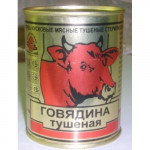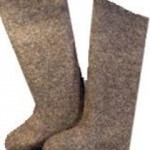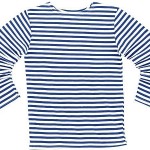
Day of Forgiveness
What is the Day of Forgiveness?
It is a day to ask for forgivness after the Carneval time, on Last Sunday before Fasting.
https://goo.gl/ERJcUJ
Maslenitsa – Dances with Bears

It is a day to ask for forgivness after the Carneval time, on Last Sunday before Fasting.
https://goo.gl/ERJcUJ

Tushonka is canned braised meat. Hearty food which with a very long shelf live (up to several years). In Soviet Russia it was a part of military ration, and it is now popular among tourists, geologists, archaeologists, mountain-climbers, solders and bachelors. Unlike in Spam or Luncheon meat, it is not pinky substance of processed meats, but rather pulled apart beef, pork – actual meat. It has a distinct flavor of pepper and bay leaf, and these days people sometimes crave this food as a fond memory from the past. Tushonka is present in almost every store and is a source for quick and budget-friendly protein. It can be mixed with potatoes for a lazy dinner or used in a staple dish Makarony po-flotski (Marine pasta).


Valenki are often worn with rubber galoshes to protect the felt from wetness and to add extra resistance.
Russian valenki date back to the 18th century when the first pair was produced. Mass production of valenki started in the end of the 19th century when factories were opened.
Traditional valenki are black, grey or white. Handmade valenki are reputed to be of the highest quality.
How valenki are made:
In the 20th century, improvement in technology allowed manufacturers improve valenki’s water resistance whilst retaining the advantages of the felt. Modern valenki can have a wedge platform or even heels. Valenki are favoured by many parents: children can be warm while skiing, throwing ice-balls or making snowman, having these Russian boots on.
“Dumb as a valenok” saying
The word valenok is a part of an idiom. If somebody calls you a valenok, don’t be flattered. Despite all the wonderful qualities of this Russian boot, valenok means unsophisticated, dumb person, as the footwear itself seems to be very simple and coarse compared to more elegant shoes.



Samovar has a central role in Russian culture: all Russians love drinking tea and have it with milk or lemon and sugar accompanied by a variety of tea time treats. In the modern world tea sachets give you a quick drink in 5 minutes, but nothing compares by brewing your tea in a teapot, and the poshest way is to make it in samovar. This huge metalic container is now used on special occasions. You can have electric kettles and those working on fire.
People spending their time in datchas, which are houses in the countryside with a lot of land, use the real-deal samovars, and it’s not uncommon to use and old boot to fan the flames.
The origins of the samovar aren’t entirely clear, though most signs point to Russia or central Asia. The word is Russian though, and it literally means “self-boiler”.
There is a proverb in Russia that reflects both the popularity of the samovar and Tula being the city where samovars are produced. The saying goes like this: “To go to Tula with your own samovar” which means to bring your own stuff to the place where this very stuff is in abundance and of higher quality. Think about going to a yoga class in a posh resort, and brining your own worn-off yoga matt. Or something like that. You can read about tea time treats on our website. Happy tea drinking


The Russian telnyashka (Russian: тельня́шка) is a undershirt horizontally striped in white and navy blue colors. Telnyashka be sleeveless or not. It is an iconic uniform garment worn by the Russian Navy, the Russian Airborne Troops (VDV) and the Russian Naval Infantry (marines).
First telnyashkas appeared at the days of sailing fleet and the stripes were of various colours. This pattern allowed sailors on board to see the actions that the sailors are making working high up with the sails. The sailors often knitted teylnashkas themselves to entertain themselves off the shift. This was a calming and relaxing pass-time.
In the beginning of XVIII century almost outfit in almost all European fleet was standrartized. In Russia telnyashka was then abandoned, the sailors were to ware tight leggings, kaftan robe and cylinder hats. Wearing stripped telnyashkas was punishable.
The new outfit was not comfortable, but telnyashka got back to favour only in XIX when the Dutch sea suites got populrazied. The Dutch outfit comprised of short pea coat, blue flannel jacket with a low neckline, shirt and black bell-bottomed trousers.
Russian sailors were wearing telnyashka under the Dutch-style shirt with a V-neck вырез (the stem Telnyashka <- telo (rus. Body) ). The sailors were treating this outfit with pride and wore it on special occasions, when they were to dress up.
Dating back to the 19th century Tsarist Navy it was subsequently worn by the Soviet successors of these troops.
Telnyashkas are worn today by fashionistastas who like to combine the white and navy blue garment with other accessories and matching colours.


